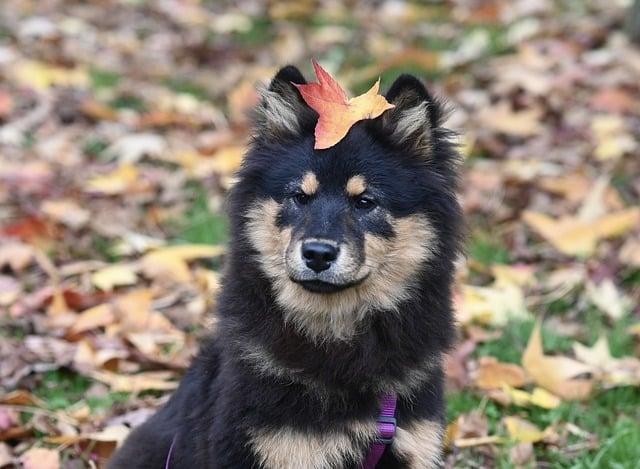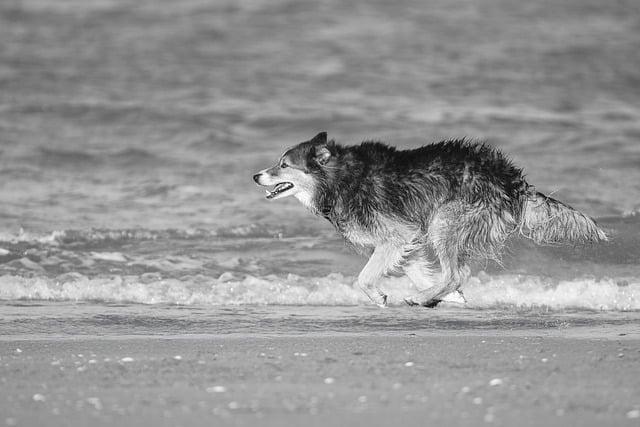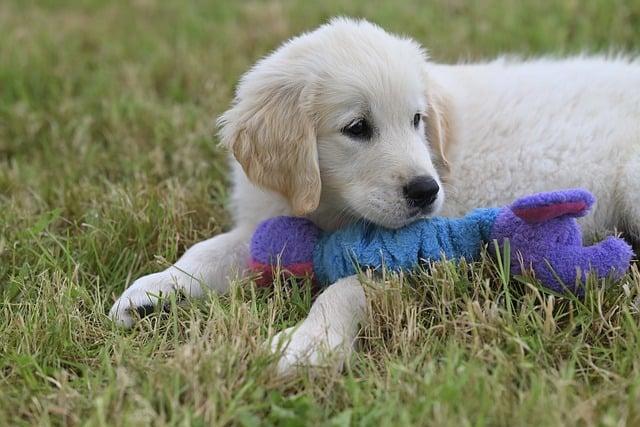Every time I handed my dog a new toy, I felt a mix of excitement and dread. Within minutes, he would reduce it to shreds, leaving a trail of fluff and squeakers in his wake. I wondered, “Why does my dog destroy every toy I give him?” The answer lies in his instincts. Dogs are natural chewers, and toys provide mental stimulation and an outlet for their energy. Instead of frustration, consider this: by choosing durable, interactive toys, you can engage his instincts positively, turning destruction into playtime fun.
Contents
- Understanding Your Dogs Natural Instincts and Behaviors
- Identifying the Right Type of Toys for Durability and Engagement
- Implementing Effective Training Techniques to Curb Destructive Behavior
- Creating a Stimulating Environment to Satisfy Your Dogs Needs
- Q&A
Understanding Your Dogs Natural Instincts and Behaviors
Understanding your dog’s natural instincts is crucial in addressing the issue of toy destruction. Dogs are inherently driven by their instincts, which can often lead to behaviors that may seem puzzling to us. For many breeds, the urge to chew and shred is deeply rooted in their ancestry. For instance, working dogs were bred to hunt and retrieve, while terriers were developed to dig and catch vermin. These instincts manifest in play, where toys become the target of their natural behaviors.
When your dog tears apart a toy, it may not be a sign of misbehavior but rather an expression of their innate tendencies. **Chewing** serves multiple purposes: it helps to keep their teeth clean, relieves boredom, and satisfies their need to explore the world through their mouths. Additionally, the act of destroying a toy can mimic the thrill of a hunt, providing mental stimulation and physical exercise. Recognizing this can shift your perspective from frustration to understanding.
Moreover, the type of toy you provide can significantly impact your dog’s behavior. Not all toys are created equal; some are designed for gentle play, while others are built to withstand aggressive chewers. **Consider the following factors** when selecting toys for your dog:
- **Durability**: Look for toys made from tough materials that can withstand vigorous chewing.
- **Engagement**: Choose toys that stimulate your dog’s mind, such as puzzle toys or treat-dispensing options.
- **Size**: Ensure the toy is appropriate for your dog’s size to prevent choking hazards.
- **Variety**: Rotate toys regularly to keep your dog interested and engaged.
This thoughtful approach can help minimize destructive behavior while catering to their natural instincts.
Lastly, it’s essential to provide your dog with appropriate outlets for their energy and instincts. Regular exercise, mental challenges, and interactive play can significantly reduce the likelihood of toy destruction. **Incorporate activities such as**:
- **Daily walks**: A good walk can help expend excess energy.
- **Training sessions**: Teaching new commands or tricks can mentally stimulate your dog.
- **Interactive games**: Engage in fetch or tug-of-war to satisfy their need for play.
- **Socialization**: Allow your dog to interact with other dogs to fulfill their social instincts.
By understanding and addressing your dog’s natural instincts, you can create a more harmonious environment that minimizes destructive behaviors and enhances your bond.
Identifying the Right Type of Toys for Durability and Engagement
When selecting toys for your dog, it’s essential to consider both durability and engagement to ensure they withstand the test of time and keep your furry friend entertained. **Material** plays a crucial role in the longevity of a toy. Opt for toys made from high-quality, non-toxic materials such as rubber or reinforced nylon, which are designed to endure vigorous chewing. Avoid plush toys if your dog is a heavy chewer, as they tend to fall apart quickly, leading to frustration for both you and your pet.
Another factor to consider is the **design** of the toy. Look for options that offer a variety of textures and shapes to stimulate your dog’s interest. Toys that can be filled with treats or have squeakers inside can provide additional engagement, encouraging your dog to play longer. Interactive toys, such as puzzle feeders, not only challenge your dog mentally but also help to slow down their eating habits, making playtime both fun and beneficial.
Size matters too; a toy that is too small can pose a choking hazard, while one that is too large may not be engaging for your dog. **Choosing the right size** ensures that your dog can comfortably carry and manipulate the toy. Additionally, consider your dog’s breed and chewing style. For instance, strong-jawed breeds may require tougher toys specifically designed for aggressive chewers, while smaller breeds might enjoy softer, lighter options.
Lastly, don’t underestimate the importance of **supervision** during playtime. Observing how your dog interacts with their toys can provide valuable insights into their preferences and chewing habits. This knowledge will help you make informed decisions when purchasing new toys, ensuring that you select options that not only last longer but also keep your dog engaged and happy. By investing time in understanding your dog’s needs, you can significantly reduce the frequency of toy destruction and enhance their overall play experience.
Implementing Effective Training Techniques to Curb Destructive Behavior
Understanding the root cause of your dog’s destructive behavior is crucial in addressing the issue effectively. Many dogs engage in destructive chewing or tearing apart toys due to boredom, anxiety, or excess energy. By identifying these triggers, you can tailor your training techniques to meet your dog’s specific needs. Consider incorporating **interactive toys** that challenge your dog mentally and physically, helping to keep them engaged and satisfied.
Another effective strategy is to establish a consistent routine that includes regular exercise and playtime. Dogs thrive on structure, and a well-rounded schedule can significantly reduce their urge to destroy toys. Activities such as **daily walks**, **fetch**, or **agility training** not only provide physical stimulation but also strengthen the bond between you and your pet. This connection can lead to a more secure and content dog, less likely to resort to destructive behaviors.
Positive reinforcement is a powerful tool in modifying behavior. When your dog chooses to play with their toys appropriately, reward them with praise, treats, or extra playtime. This approach encourages them to repeat the desired behavior. Additionally, consider using **training commands** to redirect their focus when they start to exhibit destructive tendencies. Commands like “leave it” or “drop it” can be invaluable in guiding your dog toward more acceptable activities.
Lastly, it’s essential to provide your dog with durable toys designed for heavy chewers. Look for options made from **high-quality materials** that can withstand vigorous play. Rotating toys regularly can also keep your dog interested and engaged, reducing the likelihood of boredom-induced destruction. By implementing these techniques, you can create a more harmonious environment for both you and your furry friend, ultimately curbing their destructive behavior.
Creating a Stimulating Environment to Satisfy Your Dogs Needs
To address the issue of your dog destroying toys, it’s essential to create an environment that caters to their natural instincts and needs. Dogs are inherently playful and curious creatures, and a stimulating environment can significantly reduce their urge to demolish toys. Consider incorporating a variety of activities that engage both their mind and body. This can include:
- Interactive Toys: Choose toys that challenge your dog mentally, such as puzzle feeders or treat-dispensing balls.
- Varied Textures: Provide toys made from different materials to keep their interest piqued and satisfy their chewing instincts.
- Regular Rotation: Rotate toys regularly to maintain novelty and excitement, preventing boredom that often leads to destructive behavior.
In addition to toys, consider enriching your dog’s daily routine with engaging activities. Regular exercise is crucial for a dog’s physical and mental well-being. Activities such as daily walks, playdates with other dogs, or even agility training can help channel their energy positively. Incorporating these elements into their routine not only satisfies their need for physical activity but also strengthens the bond between you and your pet. Some effective ways to enhance their daily routine include:
- Structured Playtime: Set aside dedicated time for interactive play, such as fetch or tug-of-war.
- Training Sessions: Engage in short, fun training sessions to stimulate their mind and reinforce good behavior.
- Exploratory Walks: Change up your walking routes to expose your dog to new sights, sounds, and smells.
Creating a stimulating environment also involves understanding your dog’s individual personality and preferences. Some dogs may thrive on social interaction, while others may prefer solitary play. Tailoring your approach to fit your dog’s unique needs can make a significant difference in their behavior. Pay attention to what excites them and incorporate those elements into their environment. Consider these strategies:
- Personalized Toy Selection: Observe which types of toys your dog enjoys most and invest in similar ones.
- Safe Spaces: Create cozy areas where your dog can retreat and relax, helping to reduce anxiety and destructive tendencies.
- Socialization Opportunities: Arrange playdates or visits to dog parks to fulfill their social needs.
Ultimately, a well-rounded approach that combines physical activity, mental stimulation, and emotional support will help satisfy your dog’s needs and reduce the likelihood of them destroying toys. By fostering an engaging environment, you not only enhance your dog’s quality of life but also promote positive behaviors that lead to a happier, healthier pet.
Q&A
-
Why does my dog have a strong urge to destroy toys?
Dogs are natural chewers and some breeds have a higher prey drive, which can lead to destructive behavior. This instinctual need to chew and tear apart toys can stem from their ancestry as hunters and scavengers.
-
Is my dog bored or anxious?
Destructive behavior can often be a sign of boredom or anxiety. If your dog is not getting enough physical exercise or mental stimulation, they may resort to tearing apart toys as a way to relieve stress or entertain themselves.
-
Are certain toys more durable than others?
Yes, some toys are specifically designed to withstand heavy chewing and rough play. Look for toys labeled as “indestructible” or “heavy-duty” to provide your dog with options that can endure their enthusiastic play style.
-
How can I prevent my dog from destroying toys?
To minimize destructive behavior, consider the following:
- Provide a variety of toys to keep your dog engaged.
- Incorporate regular exercise and playtime into their routine.
- Use puzzle toys that challenge their mind.
- Monitor their playtime and intervene if they start to destroy toys.
understanding your dog’s destructive behavior is key to fostering a happier, healthier relationship. By choosing the right toys and engaging in stimulating activities, you can satisfy their instincts and save your wallet. Invest in your dog’s happiness today!




